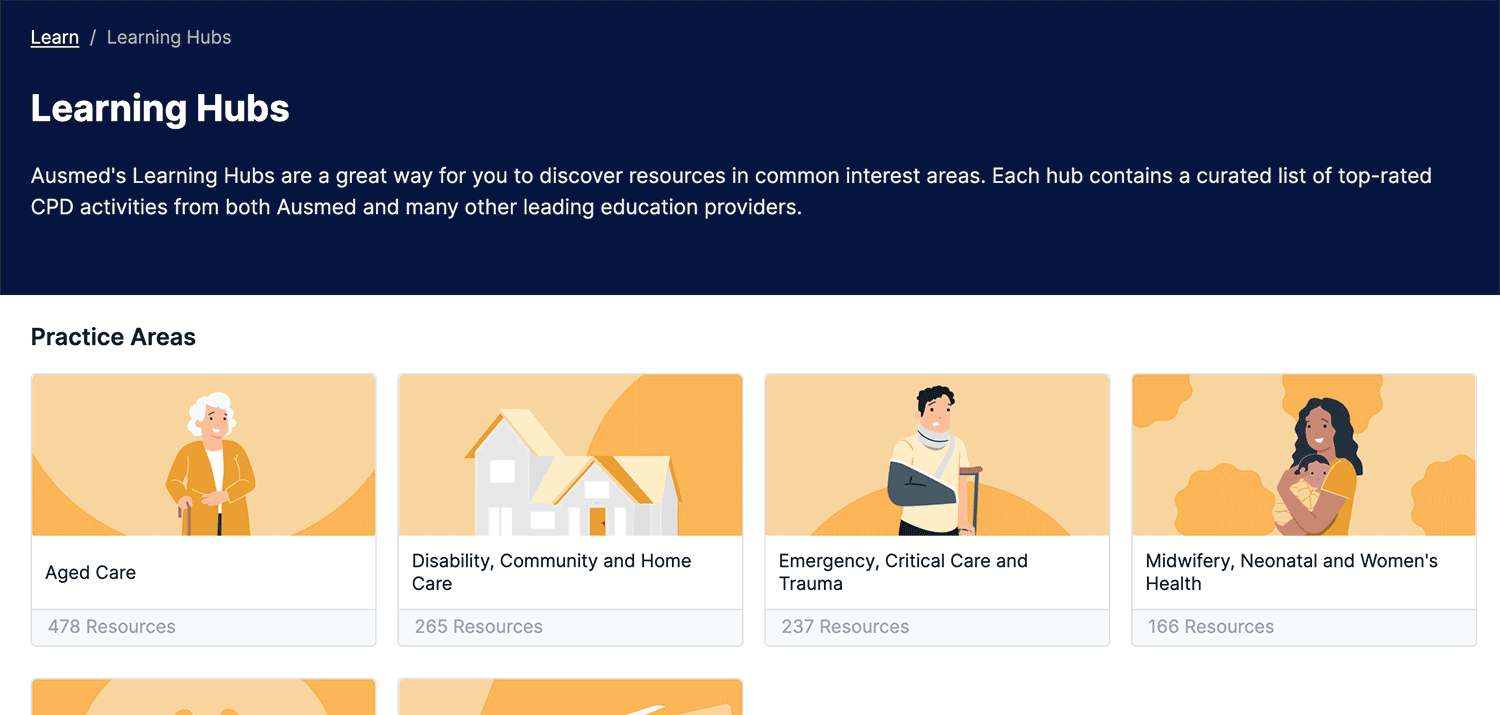Every time a staff member comes to work, they use their sense of natural curiosity.
Whether they’re figuring out a faster way to complete a small task or solving a large, organisation-wide problem, they’re using the part of their brain that thrives on learning.
If this is the case, why do organisations often struggle to create a culture of learning and development?
Perhaps more importantly, what do organisations have to gain from cultivating a culture of learning and development?
What is a culture of learning? And why do organisations need one?
‘A culture of learning’ within an organisation is a culture that celebrates, encourages and nurtures curiosity, discussion and proactive learning amongst its staff at all levels (Andreatta, 2022).
For example, if an organisation provides fortnightly digital seminars that discuss leadership skills and career development, this means that the organisation is providing educational and developmental opportunities.
However, if the organisation is also providing staff with time or even pay to attend these events, or is facilitating informal discussion amongst staff in the days following each seminar, then that is evidence of a culture of learning and development.

What effect can learning cultures have upon staff?
The employee journey can be sculpted and nurtured by a high-quality culture of learning within a supportive organisation.
Acquisition
From the perspective of staff acquisition, a clearly conveyed culture of learning can attract top talent from the industry due to their inherent career drive and ambition to grow as a professional in their field. The Association for Talent Development published an in-depth report in 2016 that reminded organisations of another benefit to a great culture of learning: this is how organisations attract – and retain – top talent in their industry.
Engagement
Staff are more likely to perform well and provide a higher quality customer experience when they feel prioritised, especially regarding their professional development.
According to a 2018 LinkedIn study conducted by HR expert Josh Bersin, staff who learn while at work are (Bersin, 2018):
- 47% less likely to be stressed
- 39% more likely to feel successful
- 23% more likely to feel able to take on further responsibilities
- 21% more likely to feel confident
Additionally, it’s been shown by other studies that personal growth opportunities – such as the opportunity to provide learning based on a personal area of expertise – increase the whole workplace’s sense of dedication to their work and the organisation’s shared mission (Tenney, 2021).
Retention
Staff retention is more likely – and turnover is reduced – when an organisation provides its workforce with the opportunity to develop their skills (Tenney, 2021).
Lower staff turnover means fewer resources are dedicated to onboarding new workers, there is an increase in knowledge transfer between colleagues, and there is an increased level of dedication to the organisation’s mission.
Recommendation
Following a staff member’s time with an organisation, they will be far more likely to recommend working with an organisation if they experienced a positive, fulfilling and supportive culture of learning and development while employed there. This will feed back into staff acquisition with more top-tier talent interested in developing their own skills at that same supportive organisation.
What effect does a culture of learning have upon the organisation’s outputs?
A culture of learning can appear almost abstract or parallel to a business or organisation’s commercial ambitions. A culture of learning, however, can impact the output of healthcare organisations as directly as a resource shortage or a boom in demand may impact the agricultural sector.
For example, in a study conducted by Emerald Works in 2020, it was shown the top 10% of organisations in the study’s sample group had ‘high impact learning cultures’ (CIPD, 2020). In other words, these organisations saw that their staff’s learning habits had a strong influence on the staff group’s ability to adapt and identify risks at work.
As such, this top 10% of organisations with high impact learning cultures were shown to have (CIPD, 2020):
- Greater innovation and employee motivation
- Higher levels of improved performance and customer satisfaction
- Greater capacities to respond rapidly to changing business conditions
- Better workplace productivity and talent management
The other organisations in the Emerald Works study had staff groups that were less aligned with the business’s ambitions, less motivated to strive for greater outcomes, and more likely to waste resources hosting learning interventions and programs that would fail in the long term (CIPD, 2020).
How can organisations create a culture of learning and development?
First, clarify that learning is not just about courses and events. Learning occurs for every member of staff on every single shift. Successful organisations view learning and development as ‘an unbounded resource to be enhanced’ (Andreatta, 2022).
Second, make sure learning is easily accessible. As discussed in this piece – Research Spotlight: Motivation for Self-Directed Training | Ausmed – staff are eager to learn, but they are unlikely to go out of their way to pursue it. It’s in an organisation’s best interest to make learning easily accessible in both digital and in-person contexts.
Third, teach managers and team leaders how to coach. This is just as important as providing various forms of accessible education: in-person explanations of difficult topics or competency gaps will build confidence in both the teacher and the learner, as well as enhance the professional bond between them (Andreatta, 2022).
Lastly, openly and clearly value proactivity and feedback within the learning program and culture. There is no one-size-fits-all for an organisational culture of learning and development: as such, feedback from all levels of the organisation is vital for the culture to thrive and remain as dynamic as the staff group (and industry) itself. From the get-go, all staff need to know where to send their feedback regardless of whether it’s positive or constructive (Greany, 2021).
How can Ausmed improve your organisation’s culture of learning and development?
Ausmed simplifies the task of creating, supporting and improving an organisation’s culture of learning and development.
Ausmed provides many features and tools specifically developed to make assigning and reporting as quick as the click of a button, leaving time for managers to meet with their staff and collaborate to make something special.
Accessibility through the Ausmed App
Healthcare professionals are often tight on time, but keeping up with their CPD is paramount to their registration requirements and the continuous improvement of the care they give. When staff want to complete education on their own terms and on their own time, the Ausmed App is there to support their learning and development goals.
Applicability through the reflection tool
Reflection is an important step in the CPD cycle for health professionals in reinforcing the knowledge they’ve learned, but can be a difficult step to perform. The reflection tool provides a structure of open-ended questions and guided prompts to help the reinforcement of knowledge for CPD.
Professional growth through dedicated Learning Hubs
Ausmed offers hundreds of educational resources to organisation users, including over two hundred dedicated to professional growth and leadership within the healthcare sector. This fast-tracks the process of teaching managers and team leaders how to coach their staff, and allows them autonomy over their leadership style, training and direction.

Value alignment through the Ausmed Policy Management System
For any culture of learning and development to thrive, staff must be working as a team towards a common goal. As such, policy acknowledgement is a great opportunity for leaders to ensure all staff are aligned with the values and vision of an organisation. By managing policies and learning within the Ausmed Policy Management System, organisations enable staff access to the latest policies when and where they need them, all natively hosted within their Ausmed account.
References
- Andreatta, B., 2022. ‘6 Steps to Creating a Learning Culture and Why You Should.’ LinkedIn: Learning Blog. Accessed 5 September 2022 via https://www.linkedin.com/business/learning/blog/culture-of-learning/6-steps-to-creating-a-learning-culture-and-why-you-should
- Bersin, J., 2018. ‘New Research Shows “Heavy Learners” More Confident, Successful, and Happy at Work.' Linkedin: Pulse. Accessed 5 September 2022 via https://www.linkedin.com/pulse/want-happy-work-spend-time-learning-josh-bersin/
- Chartered Institute of Personnel and Development (CIPD), 2020. ‘Creating Learning Cultures: Assessing the Evidence.’ CIPD: Annual Report 2020. Accessed 5 September 2022 via https://www.cipd.co.uk/Images/creating-learning-cultures-1_tcm18-75606.pdf
- Greany, S., 2021. ‘5 ways to create a learning culture in your organisation.’ Elucidat. Accessed 5 September 2022 via https://www.elucidat.com/blog/5-ways-to-create-a-learning-culture-in-your-organization/
- O’Neill, E., 2019. ‘20 Tips for Creating a Learning Culture in the Workplace.’ LearnUpon Blog. Accessed 5 September 2022 https://www.learnupon.com/blog/learning-culture/
- Tenney, M., 2021. ‘Why A Learning Culture Is So Important For Success.’ Business Leadership Today. Accessed 5 September 2022 via https://businessleadershiptoday.com/why-a-learning-culture-is-so-important-for-success/



